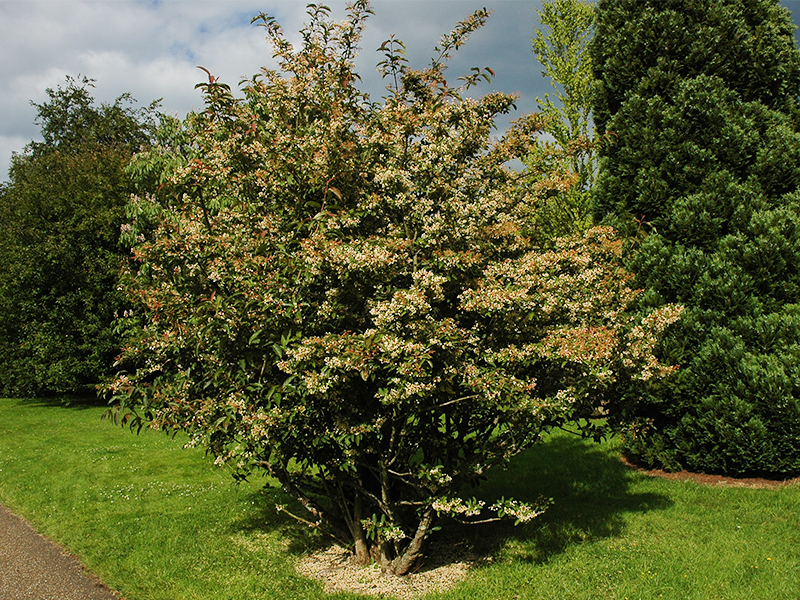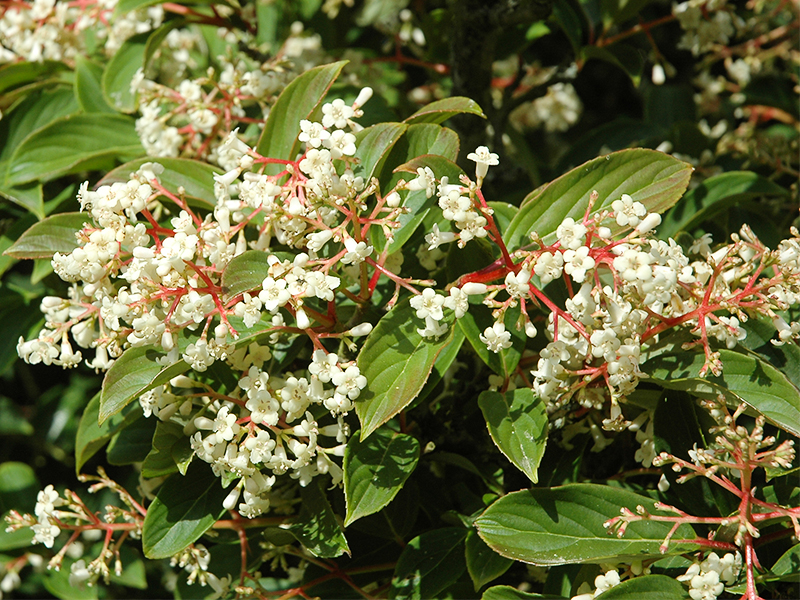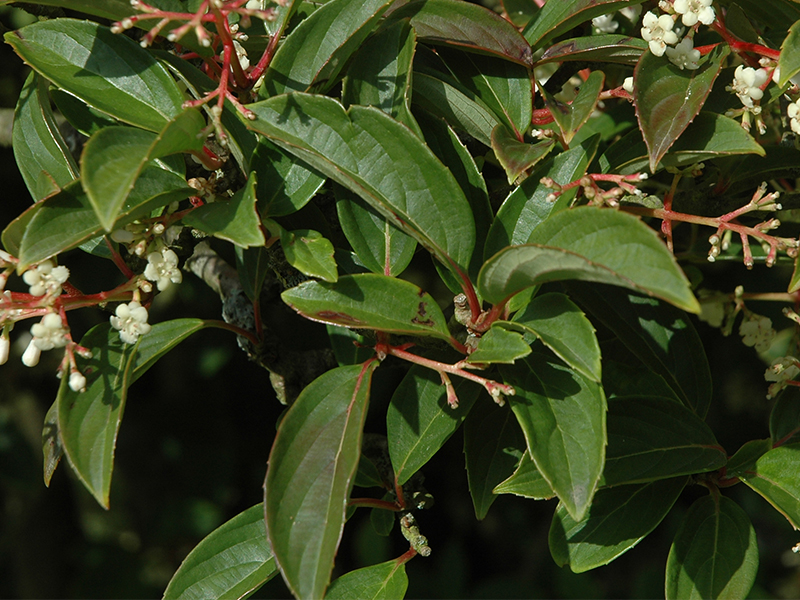
Woody > Viburnum > Viburnum x hillieri > Viburnum x hillieri 'Winton'
Viburnum x hillieri
'Winton'
Arrowwood 'Winton'
Origin: V. erubescens x V. henryi.
| Family |
| Adoxaceae (Caprifoliaceae) |
| Genus |
| Viburnum |
| Species |
| x hillieri |
| Cultivar |
| 'Winton' |
| Category |
| Woody |
| Type |
| Shrub (deciduous), Shrub (evergreen) |
| USDA Hardiness Zone |
| 5a - 8b |
| Canadian Hardiness Zone |
| 5a - 6a |
| RHS Hardiness Zone |
| H6 - H7 |
| Temperature (°C) |
| -28 - (-10) |
| Temperature (°F) |
| -20 - 15 |
| Height |
| 2.4 - 3 m |
| Spread |
| 1.8 - 3 m |
Photographs
Description and Growing Information
Flowering Period
| Landscape |
| Ornamental use. |
| Cultivation |
| Full sun and partial-shade. Moist and well-drained soil with a pH of 5.6 - 7.5 (acidic, mildly acidic and neutral). |
| Shape |
| Large and branching. |
| Growth |
| Medium |
| Pests |
| Aphids, viburnum whitefly, scale insects, tortrix moths, viburnum beetle, leaf spot and honey fungus. |
| Habitat |
| Horticultural origin. |
| Leaf Description |
| Oval shaped and narrow blades. |
| Flower Description |
| Masses of fragrant flowers that bloom in early summer. |
| Fruit Description |
| Clusters of fruit appear in autumn. |
| Colour Description |
| The flowers are creamy-white. The leaves are bronze in spring, become a dark green as it matures before turning a vivid shade of plum purple or red in autumn/winter. The fruit is red and darken to black before falling off. |
| Notable Specimens |
| RHS Garden Rosemoor, North Devon, England. |
| Propagation |
| Semi-ripe cuttings in summer, semi-hardwood cuttings and grafting. |


